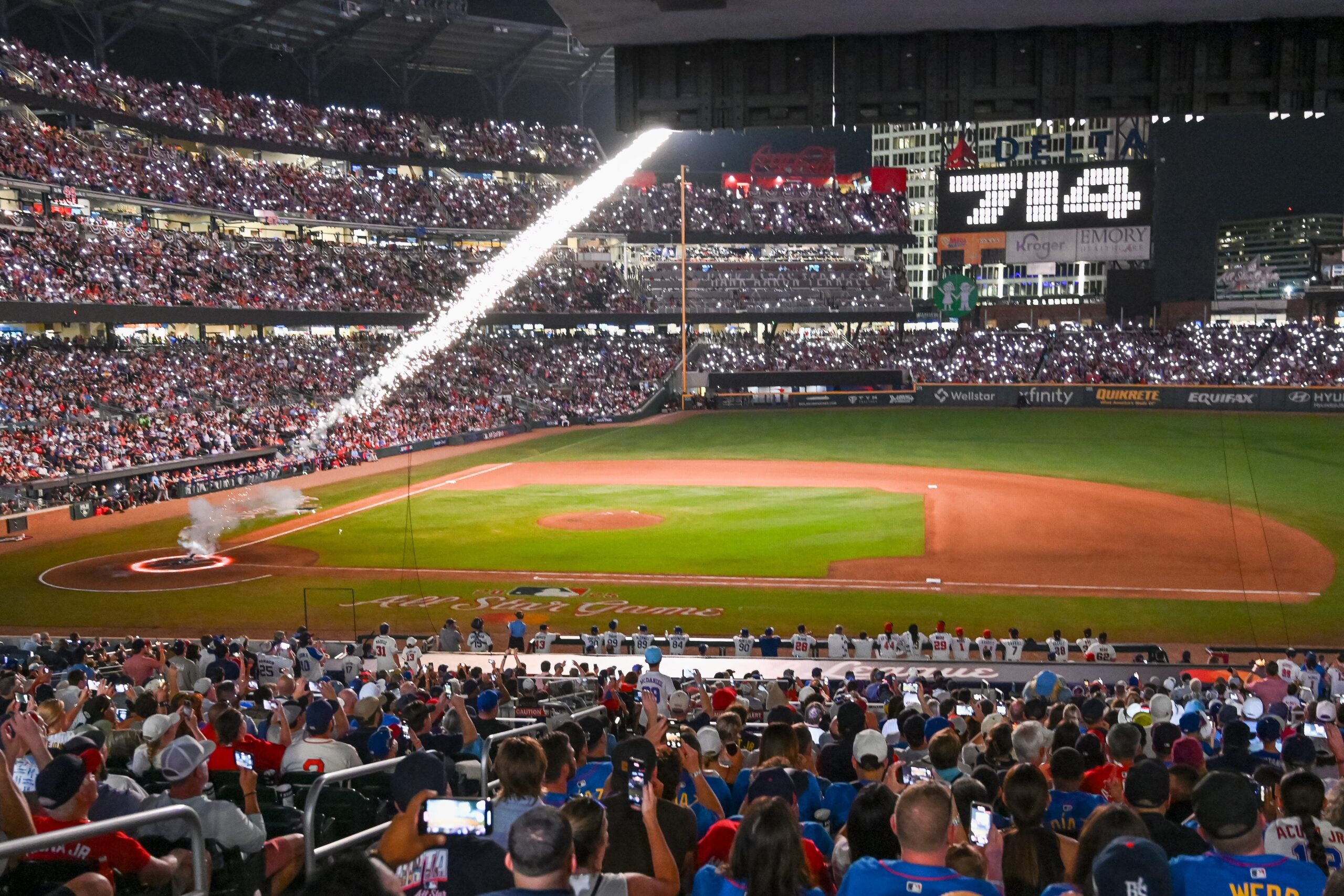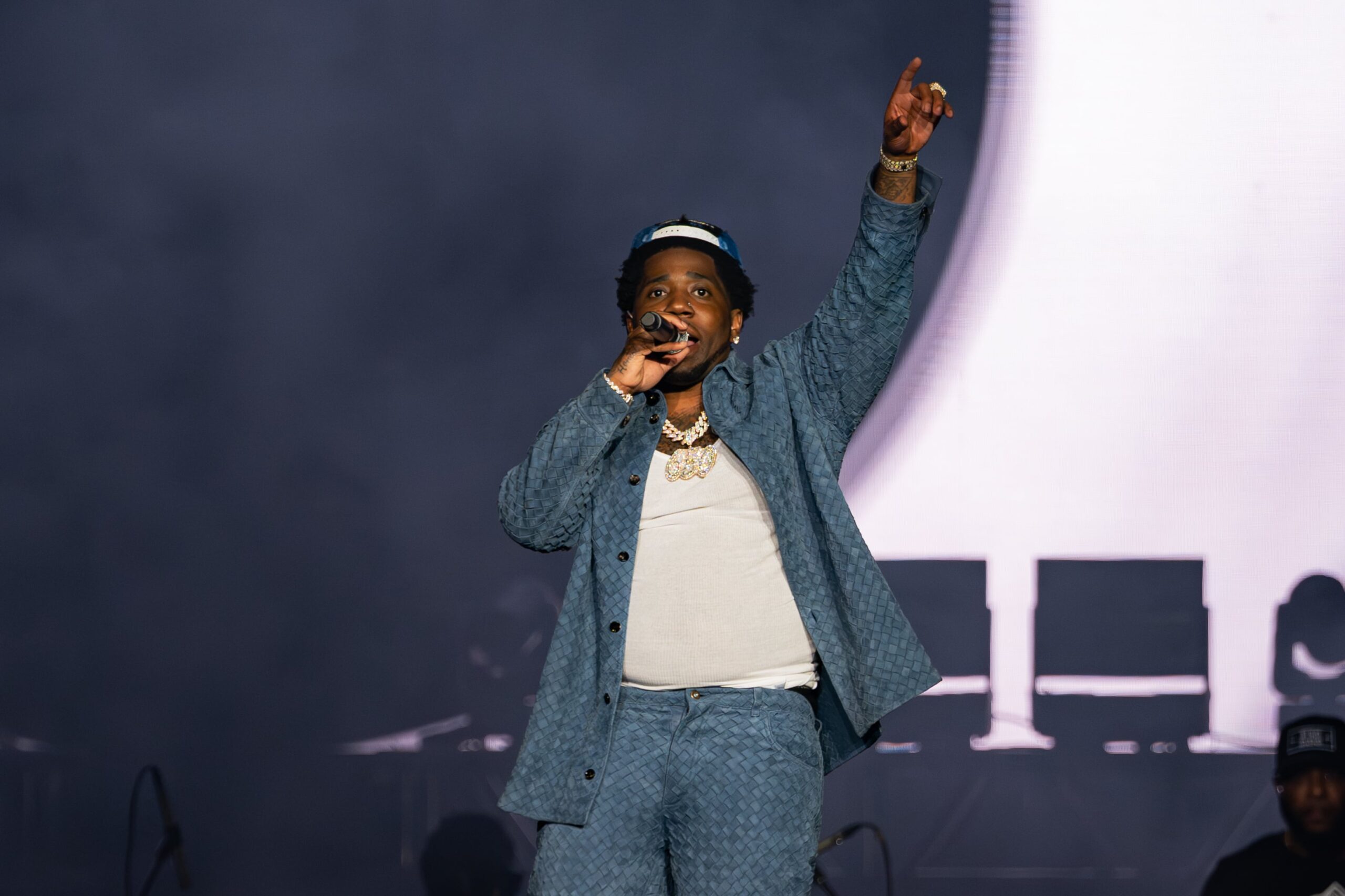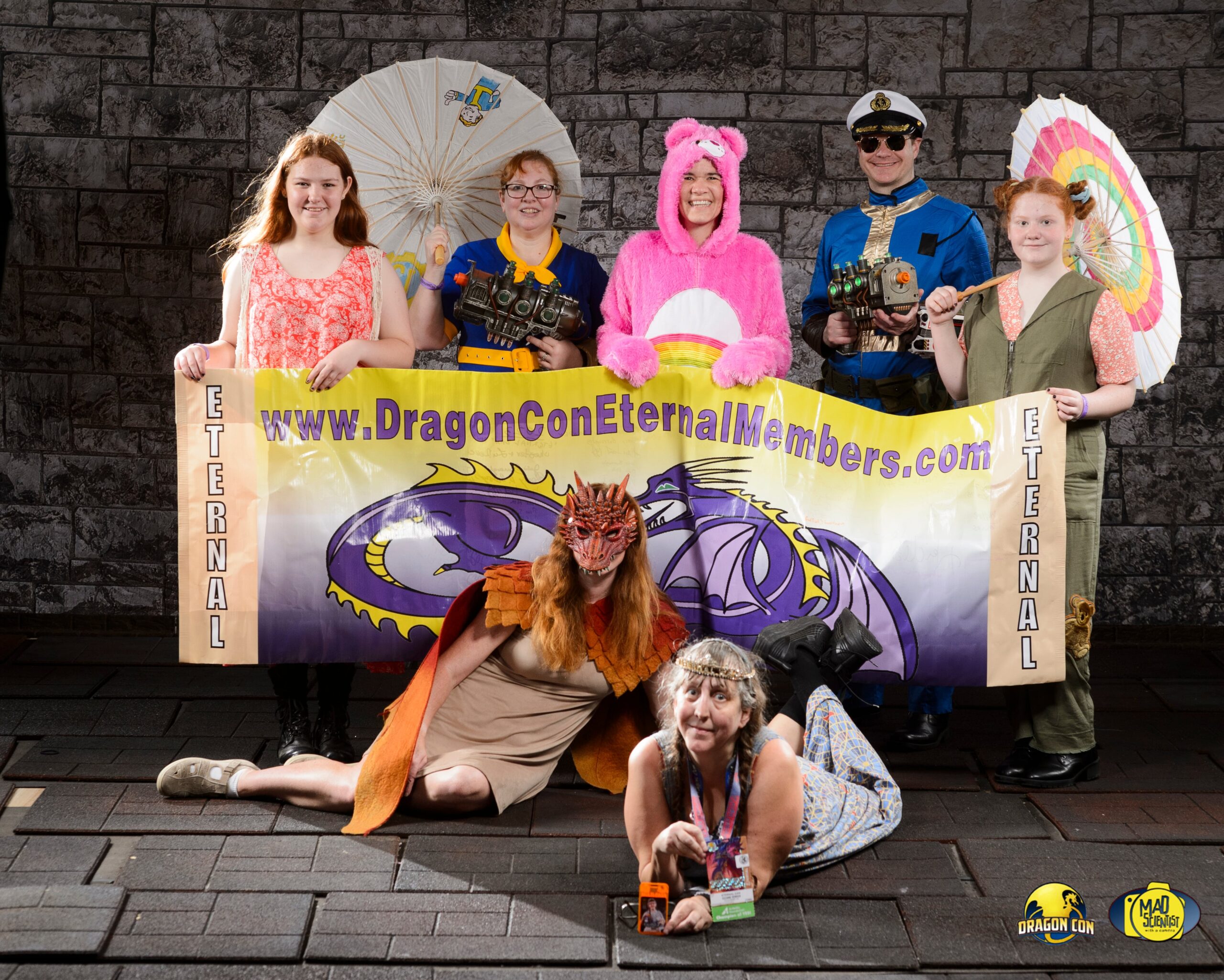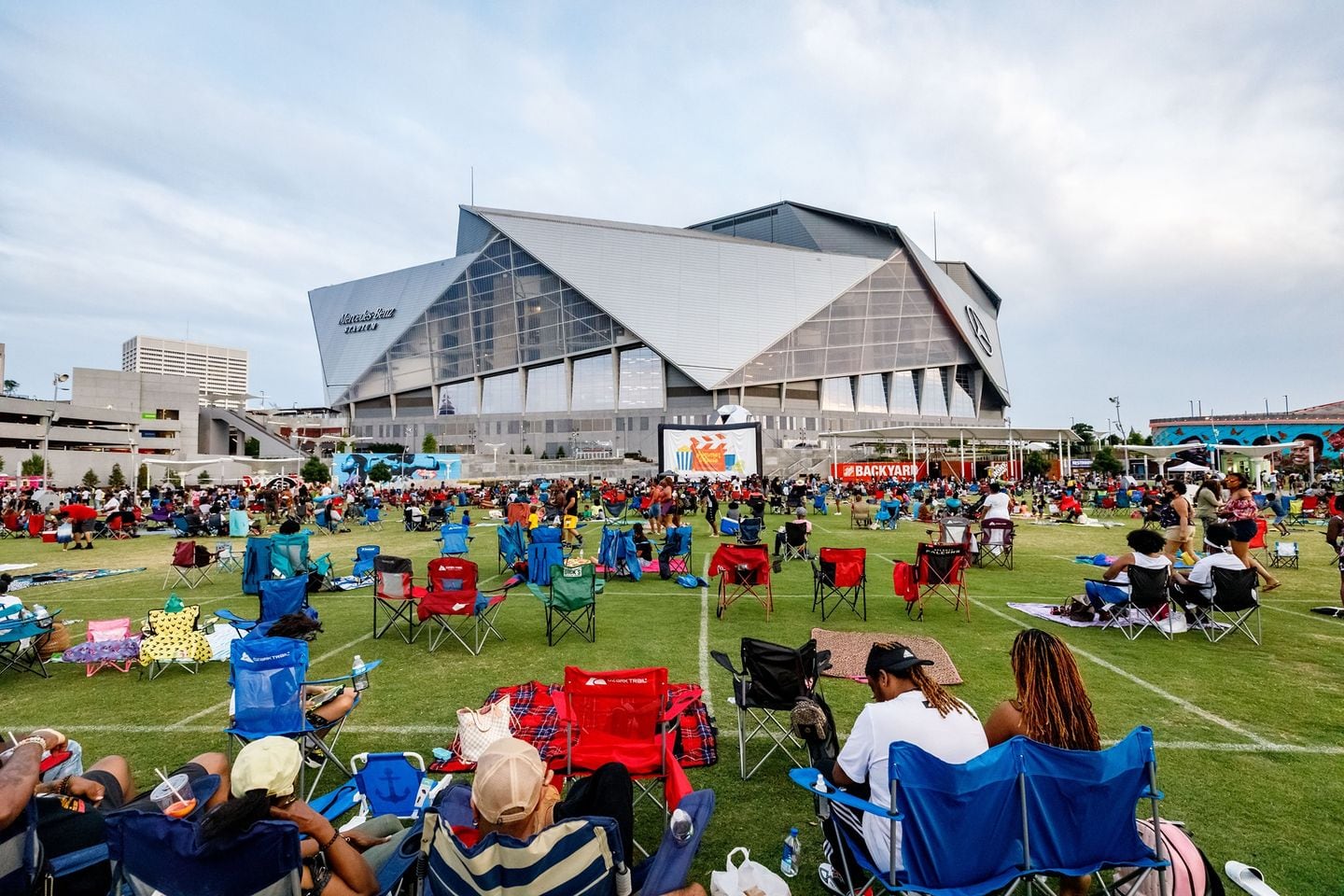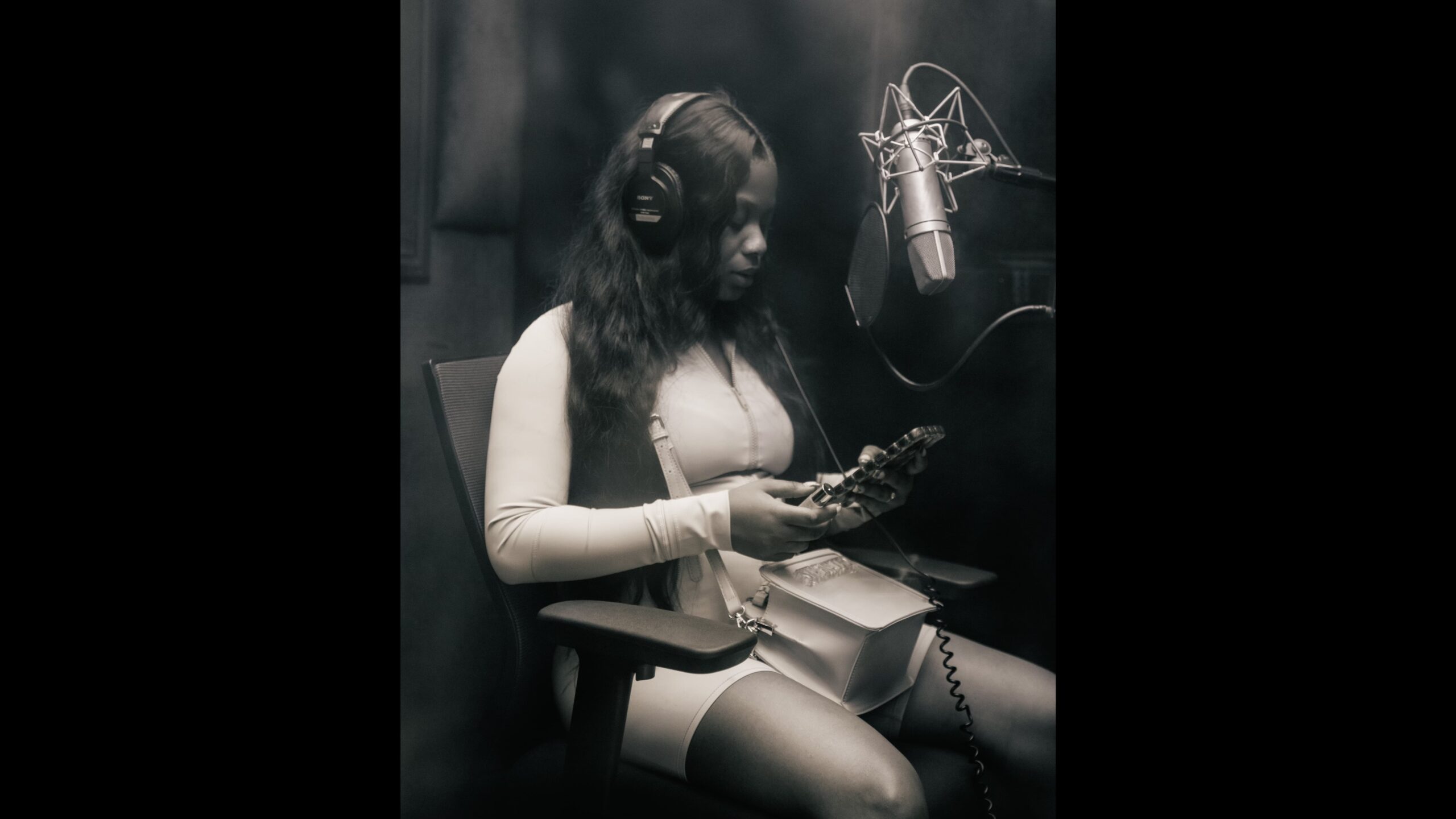“Actually, it blew me away,” said Raghu Kakarala of Decatur as he and his son Avi walked out of the stadium after the game. “I’ve seen that done in the NBA on the court before, but we were transfixed, and we had a perfect view.”
The next-level details were the pyrotechnic shot off from home plate tracing the arc of Aaron’s blast to left field on April 8, 1974, at Atlanta-Fulton County Stadium and Aaron’s footsteps around the bases projected onto the basepaths while video of the home run was cast onto the diamond through a technique called projection mapping, all synchronized flawlessly.
At the end, as fans roared their approval for the tribute, Aaron’s widow Billye Aaron appeared on the video board. As she serenely waved to fans from her seat at the stadium, the volume rose even more.
Credit: Braves
Credit: Braves
Perfect is a word that ought to be saved for the rarest of occasions, but this might have qualified. You just wish that Aaron, who died in January 2021 at the age of 86, could witnessed the tribute himself.
It was a most fitting celebration. In baseball’s singular regular-season event, when the sport stops to celebrate the game’s best, MLB honored an all-time great in his team’s home stadium by recreating the moment when he shattered a record many thought to be unbreakable, one that carried cultural meaning far beyond the sporting significance.
It is hard to believe that it didn’t register and captivate anyone who saw it, either live or on television.
Kakarala, the fan who was overwhelmed at the tribute, wore a Braves No. 44 jersey in Aaron’s honor. Kakarala’s admiration goes far beyond home runs, recognizing Aaron’s bravery as a civil-rights activist, service as a philanthropist and fundamental decency as a human.
Born in 1971, Kakarala was not old enough to have seen Aaron play and he actually grew up in Ohio, not making Atlanta his home until 1998. But he grew to admire Aaron to the point that he named his ad agency “44” in Aaron’s honor and instituted a service day every April 4 (4/4).
“He embodied everything you’d want about the game, about the city,” Kakarala said.
The commemoration was the brainchild of hall of famer and Yankees pitching great C.C. Sabathia, now working as a special assistant to commissioner Rob Manfred.
A year ago, he noticed a serendipity of timing. The 2025 All-Star Game would be in Atlanta and the numerical dates of the Home Run Derby and All-Star Game would be 7/14 and 7/15. He suggested to MLB leadership that it honor No. 715 on 7/15 in a thoughtful and tasteful way.
“Everything he meant to that city, to that organization, not only from being a player, to being an executive and all the guys he helped mentor through that organization,” Sabathia told ESPN about honoring Aaron. “I think he should always be honored … the guys that I stand on the back of, I’m going to always make sure they’re getting honored.”
Besides the tribute, MLB paid homage to both Ruth and Aaron in Monday’s Home Run Derby. In the event, National league sluggers wore Aaron’s No. 44, while American Leaguers wore Ruth’s No. 3. One further touch of magic: Ruth hit his final home runs, including 714, as a member of the Boston Braves, the franchise that Aaron ultimately became the face of.
Last fall, MLB’s Game Presentation Group put together a creative brief that was sent to three prospective companies. MLB went with Baltimore-based Image Engineering, which specializes in visual experiences using special effects including audio/visual, lasers and pyrotechnics. The company has worked with the likes of Paul McCartney, Lady Gaga, the NFL, NBA and NHL and enlisted three collaborating companies (Quince Imaging, Sam Arnold Music and Shine Entertainment) to pull off this stunning display. Image Engineering vice president Ian Bottiglieri led the project.
The images were cast onto the field with the use of 18 50,000-lumen laser projectors. The pyrotechnic was a Silver Comet Tail, which was customized for MLB by slowing down the firework’s rate of speed to better simulate a home run and elongating its burn time. More than 1,300 hours of show creation/ design and technical planning went into the presentation, which took place at the end of the sixth inning and lasted about 2 ½ minutes.
It was time and money well spent, a powerful way that this All-Star Game will be remembered for a long time.
It had been hoped that either Ronald Acuña Jr. or Matt Olson could provide a special moment for Braves fans in the same way that Aaron himself and Chipper Jones distinguished the two previous All-Star Games in Atlanta (1972 and 2000, respectively) with home runs.
They could not (Acuña did score from first base on a double, running the bases so fast he didn’t even need to slide). Former Braves star Freddie Freeman received thunderous chants of “FRED-DIE! FRED-DIE!” before his first-inning at-bat and was removed from the game with one out in the top of the third inning, allowing fans to shower cheers on him one more time. Before the game, Atlanta artists Ludacris, Jermaine Dupri, the Zac Brown Band and Kane Brown put on performances that hit home.
But Tuesday night, as fans walked out of Truist Park or turned off their televisions, it was probably a different memory they treasured.
Atlanta’s forever baseball king.
